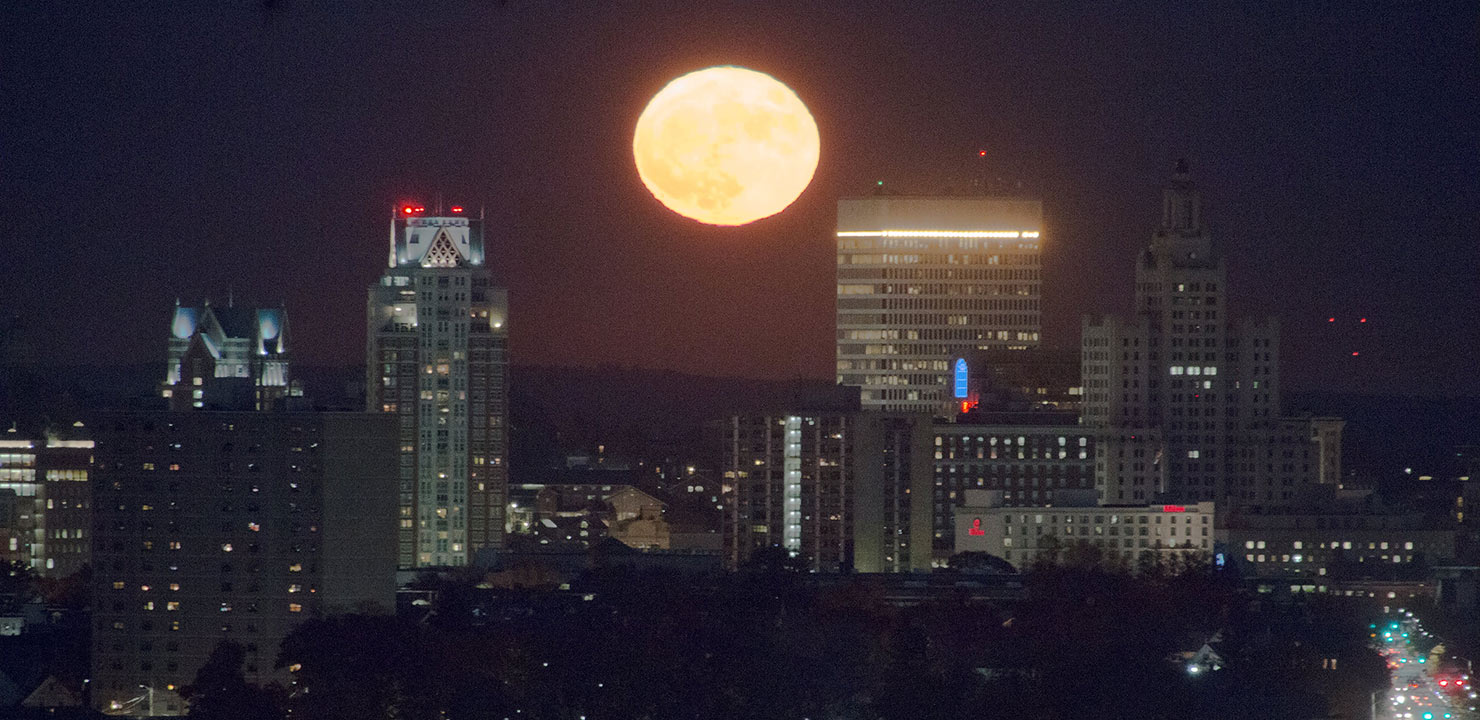
Reflections on November's Super Moon
December 2016 :
Neil Tyson had it correct. With everybody being so excited about the SUPER Moon, it's kind of forgotten that the Moon's closeness to the Earth, the perigee, is dependent on the Moon's place in its elliptical path around us.
To check the positions of the Full Moons in 2017, I printed out a copy of the perigee dates, to check this along with the phase of the Moon. January's closest point to us is two days after Full; February's is five days afterwards. Will anyone go for a super almost-3rd quarter? March is a slight problem, as there are two dates of perigee – the 3rd and the 30th – blue perigee, perhaps? The Moon is full on the 12th.
For April, May, June and July, we have to look toward apogee, the furthest point in the Moon's orbit. Those Full Moons are all within a couple days of being on the outer fringe of the path around the Earth. Will anyone push for a celebration of MINI Moons?
For most of the rest of the year, the Full Moon and perigee dates are still not really close enough for anyone to raise a glass to, although we might want to wish a Happy Large 1st Quarter September 6th. And, yes, there is a Full Moon one day before perigee in December, if anyone is still considering the superness of the Moon a year from now.
In an interview, Neil Tyson was asked about the hoopla of celebrating the gigantic Moon, and he reminded his questioner that, even if the Moon were at its closest, the normal person is hard put to actually notice the difference in size from one night to another.
Granted, many of our astrophoto people did get beautiful and apparently “large” images of the Moon this past November 14th and 15th, the “closest Moon until 2034,” but they were taken alongside the eastern horizon, when the Moon was rising, and visible against objects of known size: trees, buildings, etc. It's a fact that our eyes see the Moon larger against the horizon, a phenomenon known as the Moon Illusion. But, how many noticed the Moon several hours later when it was high in our sky? It's surprising that not one person called the TV stations asking how the Moon had deflated, although had they measured the Moon's diameter at the horizon, and then when it was in the southern sky, it would have been the same.
Yes, calling attention to the Moon low to the horizon when it is at perigee just possibly might have members of the public look up at the sky, and hopefully want to know more about what's up there – in addition to a slightly changing neighbor. If, in fact, that did happen, then maybe it was worth all the attention it got. Here's hoping the “super Moonness” did introduce someone new to the wonders of the universe, someone who will keep on looking up and enjoying it as much as we do.



